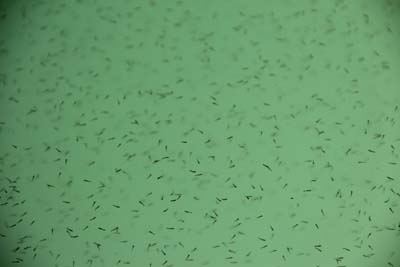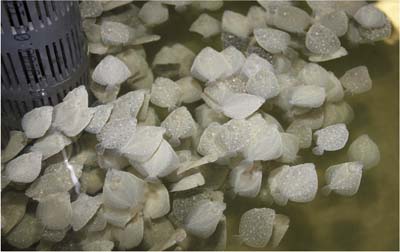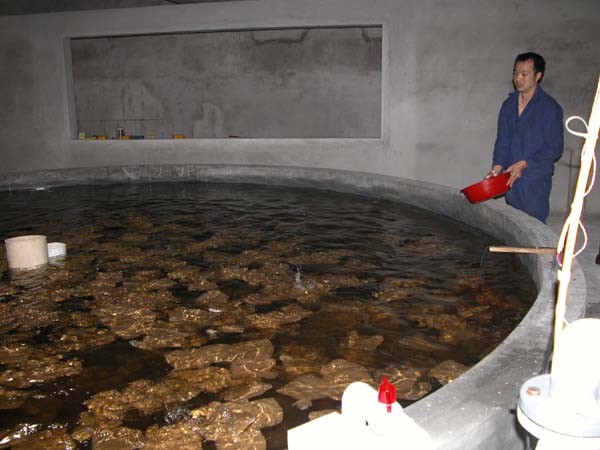1. Introduction
Turbots, also known by several scientific names such as Psetta maxima and Scophthalmus rhombus, are flatfishes found in the family Scophthalmidae. They are found mostly in shallow sandy bottom, with some genetic variation from Norway to the Mediterranean and black sea.
Turbot is a highly prized and valuable fish species, often referred to as the "pheasant of the sea". It is a true marine species, and its fry is considered relatively challenging to produce. However, once the fry has grown to around 5 grams in size, it becomes a hardy fish and well-suited for aquaculture.
In 1990, Maximus A/S in Denmark applied a new technology developed by Dr. Bent Urup, which included cultured copepods technology. Thanks to this new hatchery technology, Maximus A/S became the first company to successfully crack the code to produce juvenile turbot without deformities or poor pigmentation, with uniform growth and a strong immune response system.
Nowadays, Turbots are most efficiently produced using recirculating aquaculture systems (RAS) where water temperature can be carefully controlled year-round. By utilizing RAS and maintaining a lower biomass standing stock, the fish can grow faster, resulting in increased production. In addition, reducing the requirements on tank volume etc.
Optimally the water temperatures should consistently be maintained at around 17 degrees Celsius throughout the year.
This approach reduces the facility's overall footprint, resulting in lower capital investments and operation costs, as less space is required to produce the same number of fish.
2. Key notes for when considering farming of Turbot
i. Turbot is a well-established and widely recognized product across European markets. The market price is generally substantially higher than Salmon.
ii. There is minimal waste with Turbot (Head-on gutted). In some markets, the fish are even sold un-gutted.
iii. The tank requirement is not biomass related but related to the area the fish covers. It takes a lot of tank space to produce turbot, in general the fish can cover tank floor space up to a maximum of 3 layers of fish.
iv. The fish do not require much water dept and the depth depends on the size of the fish. Even fish of 2 kilo perform well with a depth of 0.5 meters.
v. Many attempts have been made to position the tanks for the farming of turbot in multiple layers. But it has to be recognized that working with turbot can be very labor demanding, and the design of the farm should first of all provide efficient access to handling and grading the turbot.
vi. Broodstock can be manipulated to produce eggs all year round, requiring 4 photo-temperature manipulated broodstocks. In fact, the broodstock can be manipulated by photo manipulation alone, keeping temperature constant at 12.5-13 degrees.
vii. A broodstock installation does not require much space and comes at a relatively modest cost.
viii. Hatchery technology has been developed and fry of high quality can be produced.
ix. Fry which have had an early feeding regime on copepods grows faster and are more resistant to diseases compared to fish which have been produced on Artemia and Rotifers. A reduction in production time of approx. 3 months can be expected to reach a weight of 1.5-2 kg.
x. It takes approx. 18 months to grow a fish from 5 grams up to 1,5-2 kg.
xi. Fry which have had an early feed regime on copepods tend to have a much more uniform growth, resulting in a reduced labor costs for grading. Fry quality has a major impact on overall production costs within the growout farm.
Turbot is potentially an excellent choice for aquaculture because it is a robust fish that can be produced cost-effectively using RAS technology. The controlled and stable environment provided by the RAS system ensures that the fish thrive with minimal fluctuations from their ideal growth temperature, resulting in faster growth rates and reduced space requirements for production. By selecting a rough fish that can thrive in RAS conditions, the cost of production can be lowered, and profits can be maximized. This makes turbot farming an attractive opportunity for aquaculture businesses looking to maximize their profits while minimizing their environmental impact.
One drawback is the need for a large building area, leading to higher total capital investments per kilogram of production compared to facilities for species like Kingfish or Steelhead. However, utilizing existing unused buildings could present an attractive option for Turbot farming
3. Farming: production of Turbot
i. Turbot requires a summer and winter period to spawn, even when bred in captivity. The obtention of laying spread all year round is made possible through temperature and day length modification. Each clutch consists of hundreds of thousands of eggs of approx. 1 mm in diameter.
ii. The larvae of the turbot will start to feed after 3-4 days post hatch (at a size of approx. 3-4 mm in length). The larvae initially require a diet of live prey smaller than 250 microns, such as rotifers or copepod nauplii. As they develop, they can transition to feeding on Artemia or copepod copepodites.

Picture of turbot larvae feeding on live prey in the start feeding tank
iii. If Turbot are fed copepod nauplii/copepodits, after approximately 3 weeks, the fry will reach a size of 50-70 mg. At this point, they can be transitioned directly to dry pellets, which should initially be sized between 400-600 µm.

Picture of Turbot fry, at the stage where their live feed diet has just been replaced by a dry pellet diet. At this stage fry have a wet weight of 50-70 mg.
iv. If the larvae have been fed only on rotifers and Artemia, it may take up to 5-6 weeks before the fry can be weaned to a dry pellet feed, and it might be necessary to do it gradually by co feeding them on Artemia.
v. 6-8 more weeks after weaning, the fry will have grown to a size of approximately 4-5 grams, and by then, their immune systems will have developed strongly enough to be transferred to the grow-out facility. Between 1990 and 2013, the majority of fry produced at Maximus were shipped to the northwestern part of Spain, where the seawater temperature is suitable for farming turbot. However, with advanced RAS technology, production can be done more economically in closed systems, an ideal location would be a site where the intake water would never exceed 15-16 degree, 10-12 degrees even better, whereby cooling of the system would not be required for maintaining a production temperature of 17 degrees.

Picture of approx. 3 g turbots (post weaning). (Picture B. Urup)

Picture of 5 g turbots from Maximus A/S ready for transfer to growout. (Picture B. Urup)
vi. During the growout phase, it will take approximately 18 months to grow the turbot to harvest size. Therefore, it will take an average of 2 years from post- hatch to a market size of 1.5 -2 kg.

Picture of turbot in grow-out RAS facility in China, with RAS technology delivered by UNI-Aqua, applying water treatment technology, as originally developed by Aqua-Partners ApS (Picture B. Urup) A technology which now has been further developed.
